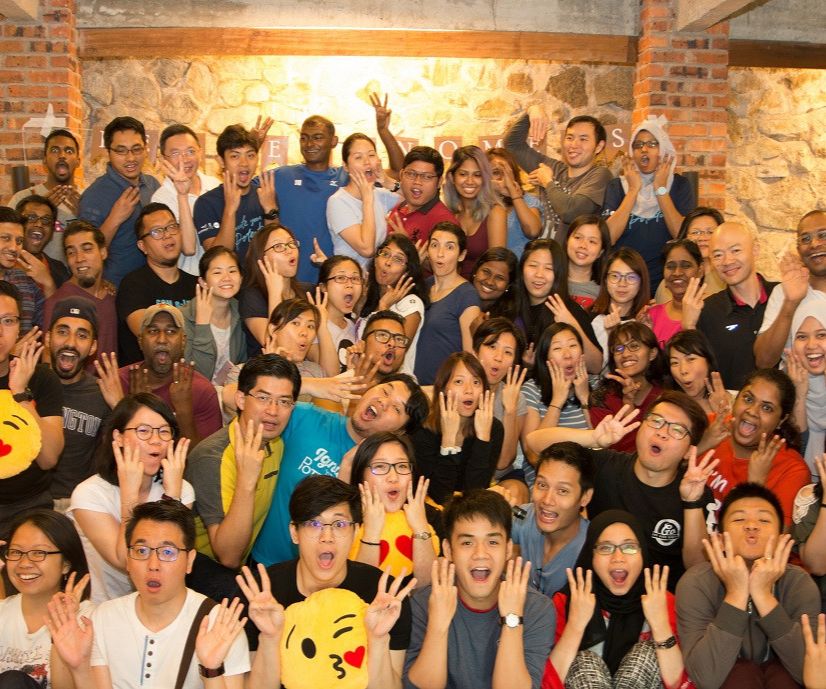3 Techniques to Energise Large Crowds

The sight of any large audience can give the heebie-jeebies to the best of public and professional speakers. To get nervous is normal. To be in awe of the energy pulsating from crowds is also normal.
There are however, across the world, a handful of speakers who know how to manage and motivate large groups by using the energy that emanates out of these crowds. These brilliant speakers are conversant with the science and psychology of large groups and have mastered a few techniques to tame and entertain the beast.
Here are three of my ideas and the science behind them.
1. Stand up and smile
Time: 1-3 minutes
Politely request everyone to first stand up, look around the crowd, smile, and make eye-contact and wave at people they are acquainted with or just met. This will create a stir and you’ll hear a very gentle murmur swoosh across the hall, and in less than 60 seconds they’ll make do to sit or turn towards you, the speaker.
At this point, add: “Now there might have been someone in the crowd that you wanted to smile at but did not out of courtesy. Why don’t you stay standing and give them a special wave or, if you are really brave, send them a flying kiss!”
Now, whether all participate in this or not, a wave of giggles, chuckles and comments will sweep the room and the energy levels will go up. Whether you succeed with the technique or not, you will have achieved your purpose of breaking the ice and warming up the audience to you and to the interaction.
The science behind it: The psychology and the state of mind of a large crowd are quite nebulous. Individual states of mind in such large audiences sway from the extremely shy, cautious and self-conscious to bold, loud and sometimes brash. The pendulum sways rapidly between these two extremes.
When you as a speaker invite the shy and self-conscious mode of the audience to turn towards the bold and the brash, you are crossing the lines of modesty and protocol, and offering fun and humour.
In all fun and humour lies a minor violation of limits. It is what we, individually, call ‘letting our hair down’. That is fun and it warms up your audience for you.

2. “Oh, yeah!”
Time: 3-5 minutes
Have them respond to your close-ended questions and have them commit to the fact that when you make a fist and punch it into the sky, their answer must always be a resounding “Oh, yeah!”
Start with something simple like, “Are you happy to be here?” and they’ll all go “Oh, yeah!”
Follow through with questions such as:
- Do you want to have more fun? “Oh, yeah!”
- Do you like eating chocolate? “Oh, yeah!”
- Don’t we all just love George Bush? “Oh, yeah!”
- Is the chairman of the board wearing pink boxer shorts? “Oh, yeah!”
- Aren’t we all just plain crazy? “Oh, yeah!”
Of course, it is important to be aware of the solemnity of the occasion and the kind of culture that exists in that group. Add and be creative with questions relevant to your audience.
The science behind it: The science behind this is also pretty simple and almost the same as the one behind the first technique. It is just that now you as a speaker are the maestro and the cheerleader. Do remember to pump up your energy levels and state before you do this. It must all not just appear to be in tongue-in-cheek, but really be so.
Play it politely, stretch your limits just a bit, and make sure that your humour is benign and targeted at large icons, not individuals.
Related article: The Art of Public Speaking
3. Other options
Time: 5-7 minutes
Have them stand up, move away just a bit and go meet three new people, and have them ask these new acquaintances, “What better thing would you be doing if you were not attending this event?” This will get people opening up, laughing and sharing their other life options for the day.
Manage this physical movement and activity quickly if your audience is really large because people love talking to each other, especially about what is on the top of their minds, and this can take up time.
For smaller audiences, where you have time, you may for a laugh want someone to share their ‘other options’ with the crowd.
The science behind: Exactly that: “People love talking to each other and opening up with what is currently on their minds.” People always like to have a second and third opinion on the choices they have made about their daily activities, and being able to talk about it to new acquaintances in an atmosphere of safety and control makes it all the more fun and easy.
Also, when you begin to speak, these new acquaintances will exchange glances of approval and nods about your presentation and help you sustain an atmosphere of camaraderie and interactive learning.
Archimedes is claimed to have once said to King Hieron of Syracuse, “Give me a lever long enough, a place on which to stand and I shall move the earth.”
A good public speaker knows what excites and moves large audiences. All he or she needs is a little leverage to get the action and the learning going. Public speaking is a powerful discipline and you, as a leader, can move mountains when you master the finer nuances of the science behind it.
Reposted with permission on Leaderonomics.com.
Functional
Tags: Quality





